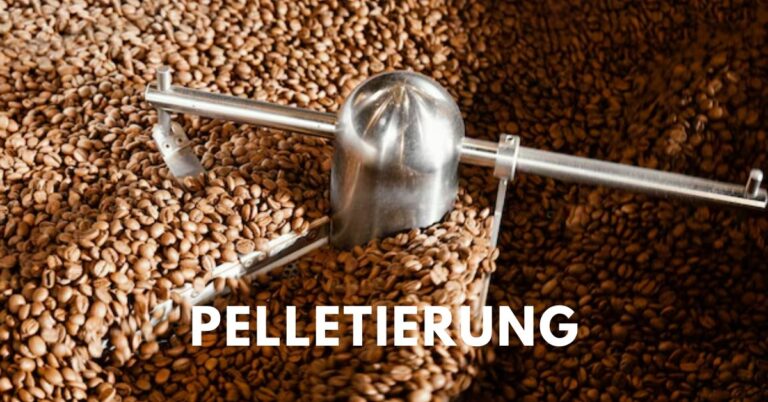Introduction to Pelletization
Pelletierung, or pelletization, is revolutionizing the way materials are processed and utilized across various industries. Imagine taking raw materials and transforming them into uniform, spherical pellets that enhance efficiency and performance. This innovative approach not only optimizes production but also offers significant advantages in terms of handling, storage, and application.
As we delve deeper into the world of pelletization, you’ll discover how this technique streamlines processes while improving quality. Whether you’re an industry veteran or just beginning to explore material processing methods, understanding pelletierung can open doors to new opportunities and solutions. Get ready to unlock the potential of this fascinating process!
The Benefits of Pelletization
Pelletization offers numerous advantages across various sectors, enhancing both efficiency and product quality. One significant benefit is improved handling and transport. Pellets are compact and uniform, making them easier to store and move compared to loose materials.
Another key advantage lies in reduced dust formation during processing. This not only improves workplace safety but also minimizes material loss, leading to cost savings for manufacturers.
Additionally, pelletized products often exhibit enhanced flowability. This property makes them suitable for automated systems that require consistent feeding rates without clogging or buildup.
Moreover, the pelletization process can lead to better nutrient distribution in agricultural applications. The uniformity of pellets ensures even delivery when applied as fertilizers or animal feed, maximizing efficacy and yield potential.
Environmental benefits cannot be overlooked. Pelletizing organic waste contributes to sustainability by transforming it into valuable resources while minimizing landfill use.
Types of Pelletization Techniques
Pelletization techniques vary widely, each designed to meet specific needs. The most common methods include extrusion, granulation, and compression.
Extrusion pelletization involves forcing material through a die. This technique ensures uniformity and is ideal for producing pellets with consistent shapes and sizes.
Granulation focuses on agglomerating fine powders into larger particles. It enhances flow properties, making it suitable for pharmaceuticals and fertilizers.
Compression pelletization uses mechanical force to compress materials into dense pellets. This method often yields the highest density products but requires careful control of pressure.
Each technique has distinct advantages based on the desired end product characteristics. Selecting the right approach depends on factors like material type and intended application, influencing everything from efficiency to quality in production processes.
The Process of Pelletization
The process of pelletization involves a series of careful steps designed to transform raw materials into uniform pellets. Initially, the feedstock is crushed and ground to achieve a consistent particle size. This ensures optimal binding during the subsequent stages.
Next, moisture content is adjusted by adding water or other binding agents. This step is crucial as it influences how well the particles will stick together. Once prepared, the material enters a pellet mill where mechanical forces compress it into small spheres.
After shaping, pellets typically undergo drying to reduce their moisture levels further. The final stage often includes cooling and screening to eliminate any irregularly sized pellets. Each phase plays a vital role in ensuring high-quality output suitable for various applications across industries like agriculture and energy production.
Applications of Pelletization in Different Industries
Pelletization has carved a niche across various industries, enhancing efficiency and product quality. In agriculture, it transforms fertilizers into uniform pellets that facilitate even distribution and controlled release of nutrients.
The feed industry also benefits significantly from pelletizing animal feeds. This process improves digestibility and minimizes wastage, leading to healthier livestock and better yields.
In the pharmaceutical sector, pelletized drugs offer precise dosages. These small spheres can enhance solubility and absorption rates, ensuring patients receive optimal therapeutic effects.
Additionally, the recycling industry employs pelletization for repurposing plastic waste. By converting scrap materials into pellets, manufacturers can create new products while reducing environmental impact.
Even in energy production, wood pellets provide a renewable source of fuel. They are compact, easier to transport, and burn more efficiently than raw biomass.
Factors to Consider for Successful Pelletization
When embarking on the journey of pelletierung, several factors play a crucial role in achieving optimal results. First and foremost is the choice of raw materials. The properties of these materials significantly influence pellet quality.
Moisture content is another critical element. If it’s too high or too low, it can lead to poor binding and subsequent pellet failure. Finding that sweet spot ensures a strong bond during the compression process.
Temperature control also cannot be overlooked. Precise temperature regulation affects both energy consumption and product consistency, which are vital for efficiency.
Moreover, understanding the equipment used in pelletization is essential. Different machines have unique specifications that impact production rates and overall effectiveness.
Extensive testing should never be underestimated. Evaluating pellets post-production helps refine processes for future batches, ensuring continuous improvement in quality and performance.
Conclusion
Pelletierung plays a pivotal role in enhancing efficiency across various industries. By transforming raw materials into uniform pellets, manufacturers can improve handling, storage, and transportation. The techniques and processes involved have evolved significantly over the years, allowing businesses to select methods that best meet their specific needs.
As industries continue to embrace pelletization for its numerous benefits—such as reduced waste and improved product quality—it is essential to stay informed about the latest advancements. Whether you’re considering pelletizing for agricultural products, pharmaceuticals, or industrial applications, understanding the nuances of this process can lead to better outcomes.
By addressing key factors such as material properties and environmental conditions during pellet production, companies can achieve optimal results. Embracing these practices not only enhances productivity but also drives sustainability efforts within various sectors. Pelletierung stands out as a vital component in modern manufacturing processes that fosters innovation and growth while meeting market demands efficiently.
FAQs
What is Pelletierung?
Pelletierung, or pelletization, is the process of transforming raw materials into uniform, spherical pellets. This technique enhances handling, storage, and application efficiency across various industries by creating compact and consistent granules from powdery substances.
What are the main benefits of pelletizing materials?
Pelletizing improves handling and transport by creating compact, uniform pellets that are easier to move and store. It also reduces dust formation, minimizes material loss, enhances flowability for automated systems, and contributes to better nutrient distribution in agricultural applications.
What are the common pelletization techniques?
The most common pelletization techniques are extrusion, granulation, and compression. Each method has unique advantages: extrusion for uniformity, granulation for enhanced flow properties, and compression for high-density products.
How does the pelletization process work?
The pelletization process involves crushing and grinding raw materials to achieve a consistent particle size, adjusting moisture content, compressing the material into pellets using a pellet mill, and then drying, cooling, and screening the pellets to ensure uniform quality.
In which industries is pelletization commonly used?
Pelletization is used in various industries including agriculture (for fertilizers), feed (for animal feed), pharmaceuticals (for precise drug dosages), recycling (for plastic waste), and energy production (for wood pellets). Each application benefits from the efficiency and consistency that pelletizing provides.

